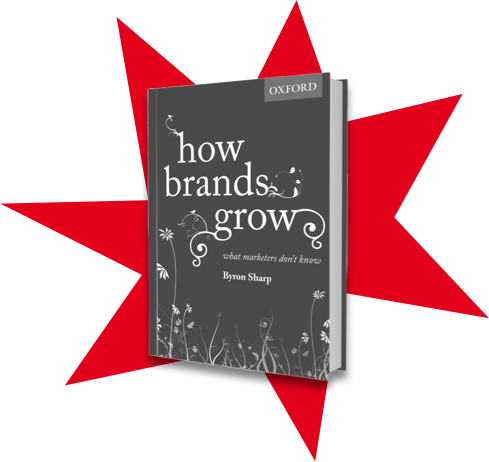Although the use of distinctive brand assets is widespread in some marketing disciplines, its potential has often been overlooked in B2B. Despite some outliers such as Salesforce, by and large this isn’t an area of marketing that many B2B specialists stray into. Which is strange when you consider the potential value to increasing the memorability of brands in sectors where customers spend most of their time out of market.
A simple way to think of a distinctive brand asset is any non-name element of a brand that can be used as a way to help trigger recall with its audience. Think black horses, meerkats, or widows of Gaelic descent. Once established, brand assets work across both brand and tactical activity, building those critical memory pathways for when a purchase becomes imminent.
One possible reason they’re not as widespread as they should be is that B2B customers aren’t always thought of in the same holistic way they might be in other sectors. Whilst respecting purchase processes and technical requirements is key, it’s equally as important to recognise that buyers are human beings with the same emotional wiring as consumers. Because they’re consumers too.
Without this balance B2B activity can tend to prioritise delivering tactical product messaging instead of focusing on building future brand saliency. Which in turn can make the likes of brand assets seem irrelevant. But, back to the point about the audience spending most of their time out of market, that ignores the work needed to build mental availability outside of purchase cycles so that preference is already programmed in when a purchase is needed.
In short, by neglecting the development of distinctive brand assets, B2B companies miss out on the opportunity to build the brand memory structures essential for influencing purchase decisions when the need arises.
So how can this be addressed? There’s a sizeable body of work, led by the likes of Byron Sharp and Jenni Romaniuk, that gives us plenty of pointers.

Build brand memory structures: Consistently exposing customers to distinctive brand assets like logos, colours, and fonts helps create and reinforce memory structures in their minds. Even when customers are not actively in the market, these assets contribute to the development of brand associations and familiarity. This increases the likelihood that customers will remember the brand when the need for their products or services arises, leading to improved brand recall and consideration.

Enhance brand salience: Distinctive brand assets that capture consumer attention increase brand salience. When customers encounter unique assets like memorable characters, they leave a lasting impression and contribute to the brand being top-of-mind when they enter the market. This heightened brand salience increases the likelihood of consideration and purchase, providing a competitive advantage.

Differentiate from competitors: Distinctive brand assets enable B2B companies to stand out in a crowded market. With numerous advertising messages targeting B2B customers, having recognisable and memorable assets ensures that the brand cuts through the clutter, capturing attention and consideration. This differentiation can lead to increased market share and protection against price-based competition. Examples like Coca-Cola’s iconic brand assets or McDonald’s distinctive golden arches demonstrate the power of differentiation in the FMCG sector.

Facilitate brand recall: When B2B customers are ready to make a purchase decision, distinctive brand assets increase the likelihood of brand recall. By consistently exposing customers to these assets, strong associations are formed between the brand and its distinctive elements. This enhances brand recall during the decision-making process, increasing the chances of being selected as the preferred choice. Memorable characters like the Geico Gecko or the Energizer Bunny showcase how characters can enhance brand recall.

Foster emotional connections and likability: Characters, in particular, have the power to create emotional connections with B2B customers. They can evoke positive emotions, enhance brand recall, and foster likability. Aligning the character’s traits and personality with the brand values strengthens the overall brand identity and reinforces brand associations in customers’ minds, leading to long-term loyalty and repeat business. The success of characters like the Michelin Man demonstrates the effectiveness of creating emotional connections.
By recognising the potential benefits and overcoming internal barriers, B2B companies can gain real competitive advantage from distinctive brand assets and characters. There are plenty of successful examples in other industries and although this process can take time to achieve results, the benefits are long-lasting. As stock markets value businesses based on cash flow forecasts over a 10-year period, perhaps it’s time to give marketing greater scope to deliver real value rather than being solely focused on hitting quarterly sales targets through transient tactical activity. Remember, 95% of the time, your audience is not in-market. Will they recall you when they are?
Further reading
To delve deeper into the scientific studies supporting these points, I recommend referring to the works of Byron Sharp and Jenni Romaniuk themselves, as they have published numerous papers and books on the subject. Two key publications to consider are:

“How Brands Grow: What Marketers Don’t Know” by Byron Sharp: This book outlines the principles of brand growth and provides empirical evidence and case studies to support its arguments.
“Building Distinctive Brand Assets” by Jenni Romaniuk and Byron Sharp: This book focuses specifically on the role of brand assets in advertising and provides insights backed by empirical research.


“Building Distinctive Brand Assets” by Jenni Romaniuk and Byron Sharp: This book focuses specifically on the role of brand assets in advertising and provides insights backed by empirical research.